
9/27/2016
1
©
Bradley Arant Boult Cummings LLP ***THIS IS NOT INTENDED TO PROVIDE LEGAL ADVICE***
Financial Services Webinar Series
CFPB Mortgage Servicing
Amendments
Part 3. What You Need to Know: Bankruptcy
September 27, 2016
Presented by:
Jonathan Kolodziej, Chris Hawkins, and Alexandra Dugan
Timeline
2
November
20, 2014
• CFPB issues proposed rule and opens comment period
March 16,
2015
• Comment period on proposal closes
• To date, CFPB has received and posted 200 comments
April 26,
2016
• Report summarizing testing of bankruptcy periodic statement
forms is published in the Federal Register and reopens comment
period
May 26,
2016
• Comment period on report and testing method/results closes
• To date, CFPB has received and posted 20 comments
August 4,
2016
• CFPB releases final amendments to existing rules in Regulations
X and Z, along with interpretive rule on FDCPA compliance
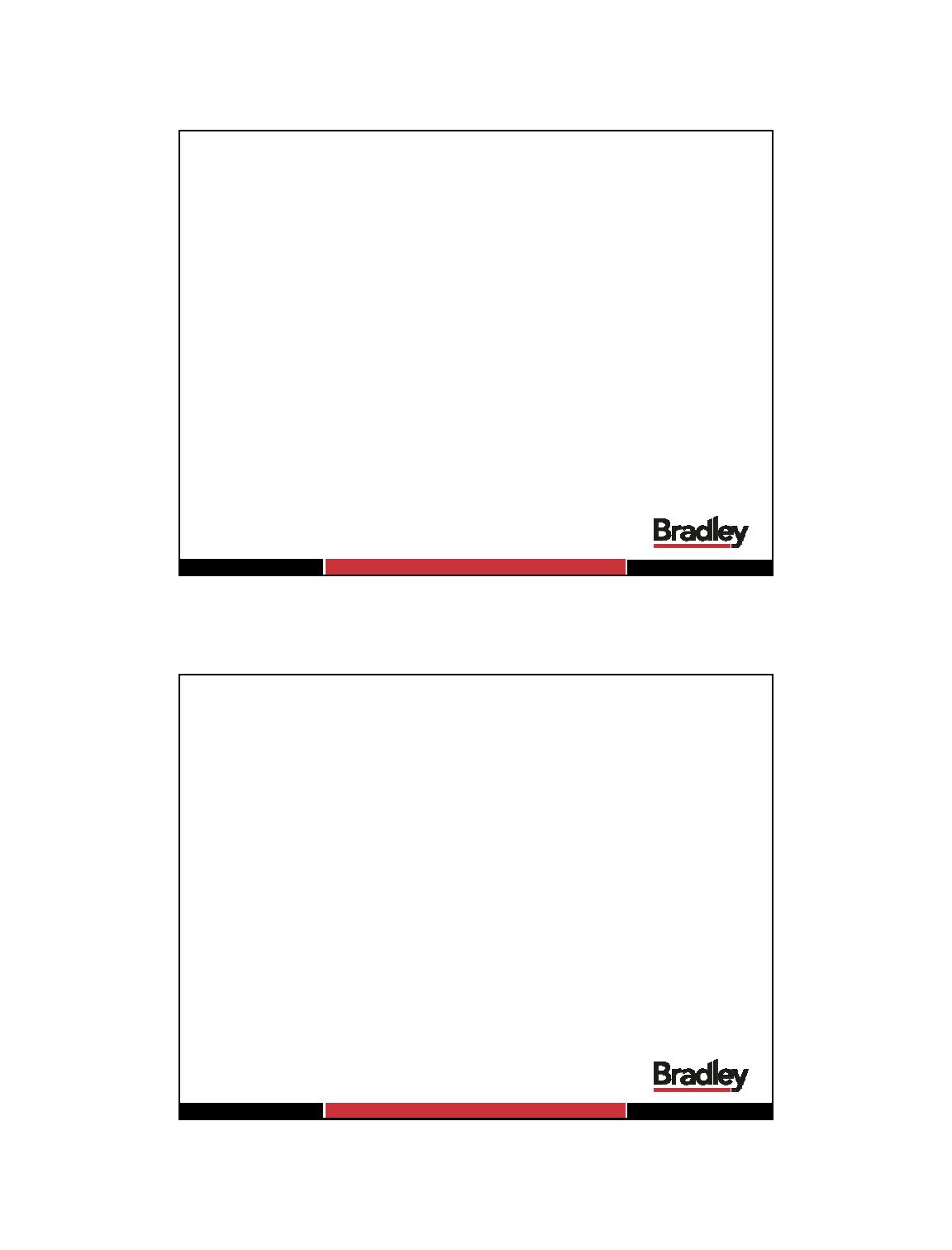
9/27/2016
2
Summary
Initial release of Mortgage Servicing Rules did not contain exemptions
for borrowers in bankruptcy, but Interim Final Rule issued October 2013
granted a reprieve with respect to problematic communication
requirements
The 2016 Final Rule contains bankruptcy requirements covering
primarily two key topics:
1. Early Intervention
2. Periodic billing statements
In the absence of a bankruptcy exemption or bankruptcy-specific
modification, the Mortgage Servicing Rules apply to loans in bankruptcy
Effective date:
• 18 months from date published in Federal Register for periodic billing
statement requirements for borrowers in bankruptcy
• 12 months from date published in Federal Register for early intervention
requirements
3
Early Intervention
4
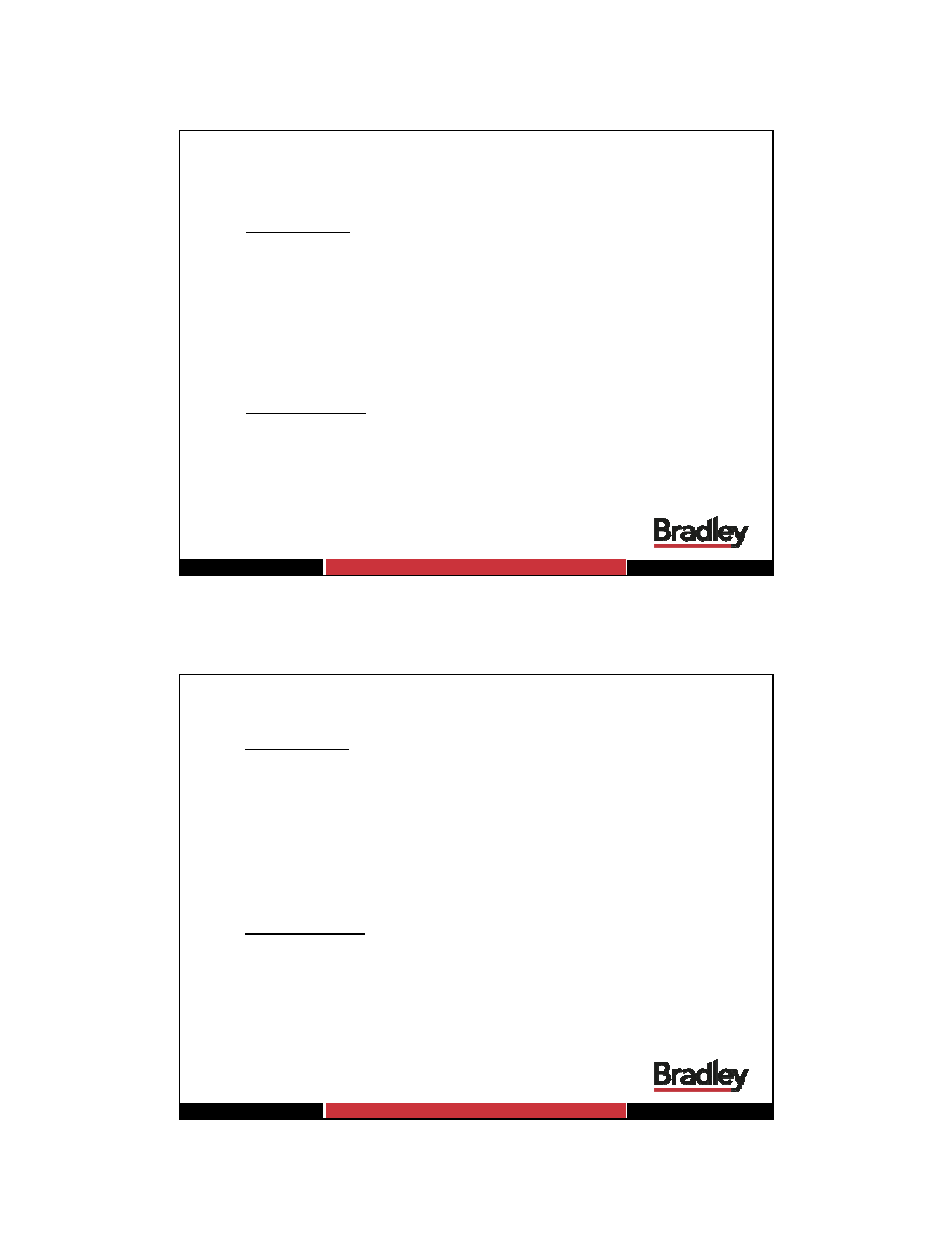
9/27/2016
3
Early Intervention – Live Contact
Current Rule
• A servicer shall contact the borrower no later than the 36
th
day of delinquency, and promptly inform the borrower of
loss mitigation options, if appropriate
• This is a recurring obligation for each delinquency
• Servicers are exempt from the early intervention
requirements while the borrower is a debtor in bankruptcy
Amended Rule
• Exemption for live contact remains intact while any
borrower on an account is a debtor in bankruptcy
• Adds clarity regarding when a servicer must resume
compliance
5
Early Intervention – Written Notice
Current Rule
• A servicer must provide the borrower with an early
intervention written notice not later than the 45th day of the
borrower's delinquency
This is a recurring obligation, but the written notice does not
have to be sent more than once during any 180-day period
• Servicers are exempt from this requirement while the
borrower is a debtor in bankruptcy.
Amended Rule
• Partial exemption for the written notice obligation
• Modified timing requirements
• Modified content for written notice
• Provides clarity regarding when a servicer must resume full
compliance
6

9/27/2016
4
Early Intervention – Written Notice
Partial Exemption
• While any borrower on a mortgage loan is a debtor in
bankruptcy, the servicer, with respect to that mortgage loan,
is exempt from the written notice requirement if
No loss mitigation option is available, or
Any borrower on the mortgage loan has provided a cease
communication request in accordance with Section 805(c) of
the FDCPA
7
Early Intervention – Written Notice
Modified Timing
• If a borrower is delinquent when the bankruptcy petition
under title 11 of the United States Code is filed, written
notice must be sent no later than 45 days after the filing
• If the borrower is not delinquent when the bankruptcy
petition is filed, but subsequently becomes delinquent while
a debtor in bankruptcy, written notice must be provided not
later than the 45th day of the borrower’s delinquency
• Modified timing requirements apply regardless of whether
the servicer provided the written notice in the preceding
180-day period
• Early Intervention written notice is not required more than
once during a single bankruptcy case
8

9/27/2016
5
Early Intervention – Written Notice
Modified Content
• Content requirements of §1024.39(b)(2) still apply:
Statement encouraging borrower to contact servicer;
Telephone number for assigned servicer personnel;
If applicable, a brief description of examples of loss mitigation
options that may be available;
If applicable, either application instructions or statement
regarding how the borrower can obtain more information; and
HUD counseling information
• Early Intervention written notice may not contain a request
for payment when sent to a borrower that is a debtor in
bankruptcy
9
Early Intervention
Resuming Compliance
• A servicer that was exempt due to a borrower’s bankruptcy
must resume compliance after the next payment due date
that follows the earliest of the following events:
The bankruptcy case is dismissed;
The bankruptcy case is closed; and
The borrower reaffirms personal liability for the mortgage loan
• Live contact and written notice exemptions continue to
apply with respect to a mortgage loan for which the
borrower has discharged personal liability
Must resume compliance with the modified written notice
requirements if the borrower has made any partial or periodic
payment after commencement of the bankruptcy case
10
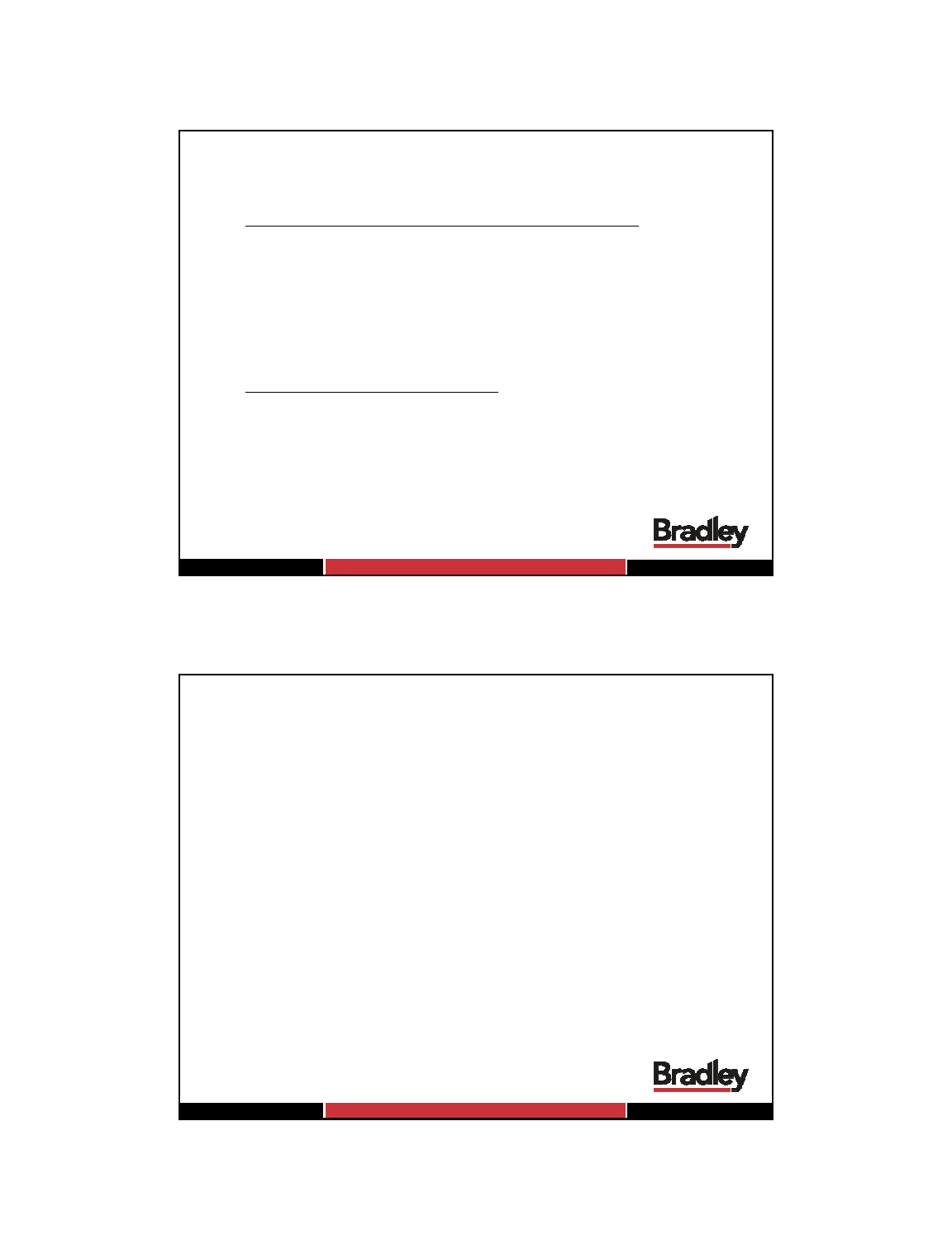
9/27/2016
6
Early Intervention
CFPB Rationale for Written Notice Requirements
• The CFPB sought to balance the desire to provide
information about loss mitigation options to borrowers
in bankruptcy with the concerns about sending
communications that could be viewed as stay
violations
Key Considerations/Takeaways
• Servicers should ensure that bankruptcy milestones
are accurately and quickly updated in the system of
record
• The early intervention amendments become effective
12 months after the publication date
11
Periodic Billing Statements
12

9/27/2016
7
Periodic Billing Statements
Borrowers in Bankruptcy
Current Rule
• Periodic billing statements must be provided for each billing
cycle, unless an exemption applies
• A servicer is exempt from sending periodic billing
statements for a mortgage loan while the consumer is a
debtor in bankruptcy
Amended Rule
• Servicers must send modified periodic billing statements to
borrowers in bankruptcy, unless the borrower is exempt
• Modified content requirements
• When a modified statement is required, the modified
statement may be sent to any or all primary obligors, even if
one of the primary obligors is not a debtor in bankruptcy
13
• Billing statements are not required if:
The borrower is in a bankruptcy case or the borrower has
discharged personal liability for the mortgage loan pursuant to
11 U.S.C. 727, 1141, 1228, or 1328; and
o The borrower requests that the servicer cease providing
a periodic statement or coupon book in writing;
o The plan provides for a surrender, avoidance of the lien
or does not provide for, the payment of pre-bankruptcy
arrearage or the maintenance of payments due;
o The bankruptcy court order provides for the lien to be
avoided, the stay to be lifted or for the servicer to cease
providing a periodic statement or coupon book in writing;
or
o A statement of intention is provided for surrender and the
borrower has not made a partial or complete payment
after the bankruptcy case
14
Periodic Billing Statements
Bankruptcy Exemption

9/27/2016
8
• Exemption no longer applies if:
The debtor reaffirms personal liability; or
Any consumer on the loan requests in writing that the servicer provide
periodic statements
o Unless a court enters an order requiring the servicer to cease
sending statements
• A servicer may establish an address that the consumer must use
to request to opt in or opt out of periodic statements
Same address must be designated for opt-in and opt-out requests
Servicer must notify the consumer of the address in a manner that is
reasonably designed to inform the consumer of the address
A consumer’s written request to opt-in or opt-out is effective as of the
date of receipt by the servicer
15
Periodic Billing Statements
Bankruptcy Exemption
Periodic Billing Statements
Bankruptcy Exemption
• Servicer must transition to sending a modified billing
statement, or back to an unmodified billing statement, when
any of the following triggers applies:
Borrower becomes a debtor in bankruptcy
Borrower ceases to be a debtor in bankruptcy
Servicer ceases to qualify for an exemption from the billing
statement requirements
• Transitional single-billing-cycle exemption
Servicers are exempt from sending a billing statement for a
single billing cycle when one of the above trigger events
occurs within 14 days of the next payment due date
• Timing of first modified or unmodified statement after
transition
Mailed within a reasonably prompt time after first payment due
date or end of courtesy period
16
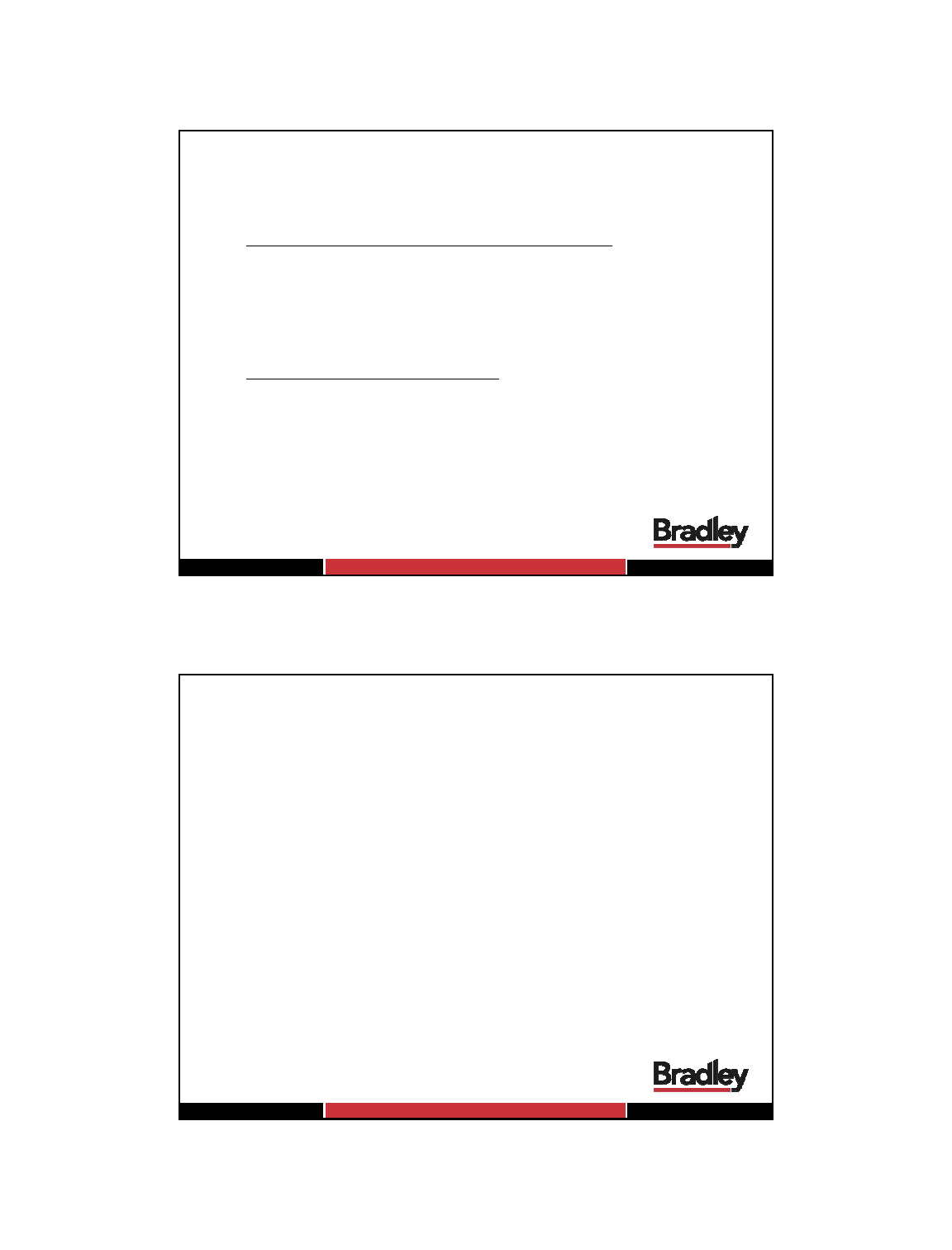
9/27/2016
9
Periodic Billing Statements
Bankruptcy Exemption
CFPB Rationale for Exemption Requirements
• The exemptions are tailored to apply to borrowers who have
provided some indication that they do not intend to retain
the property or affirmatively requested not to receive
periodic statements
Key Considerations/Takeaways
• Servicers should ensure that their system of record
accurately tracks data points to determine whether an
exemption applies, such as surrender or lift of stay.
• Servicers should ensure that reliable logic is utilized to
identify when a borrower in bankruptcy is exempt from the
periodic statement requirement.
17
Periodic Billing Statements
Content
• Servicers must provide a periodic statement or coupon
book to consumers in bankruptcy (or that have received a
discharge in bankruptcy), with modifications to account for
the bankruptcy status and the specific chapter of bankruptcy
in which the consumer is a debtor
• Sample forms
CFPB provided a sample form for accounts in Chapter 7 or 11,
and a separate sample form for accounts in Chapter 12 or 13
• Servicers may use terminology other than that found on the
samples, so long as the new terminology is commonly
understood
• Statements may be modified as necessary to facilitate
compliance with applicable law or a court order
18

9/27/2016
10
Periodic Billing Statements
Content
• CFPB rationale for modified content requirements:
The benefit to consumers of providing the modified
information in the periodic statements outweighs the
burden on servicers
The disclosures and modifications to the account
information will mitigate the risk that a statement violates
the automatic stay and/or discharge order
The information required on the modified Chapter 12/13
periodic statements will assist consumers in making
timely payments and tracking progress in their cases
Even with respect to Chapter 7 cases in which the
consumer has received a discharge, periodic statements
can assist the consumer in making the payments
necessary to retain the residence.
19
Periodic Billing Statements
Content
Key Considerations/Takeaways
• Modified statements remove essentially all references to
delinquency/late payments
• The servicer may use “contractual” basis for applying all
payments received instead of a “bankruptcy” basis.
• The servicer still must be able to provide a running
accounting with respect to the consumer’s progress toward
repaying the prepetition arrearage
• There still may be a gap with respect to when post-petition
“ongoing” payments from a trustee should be considered
delinquent.
20
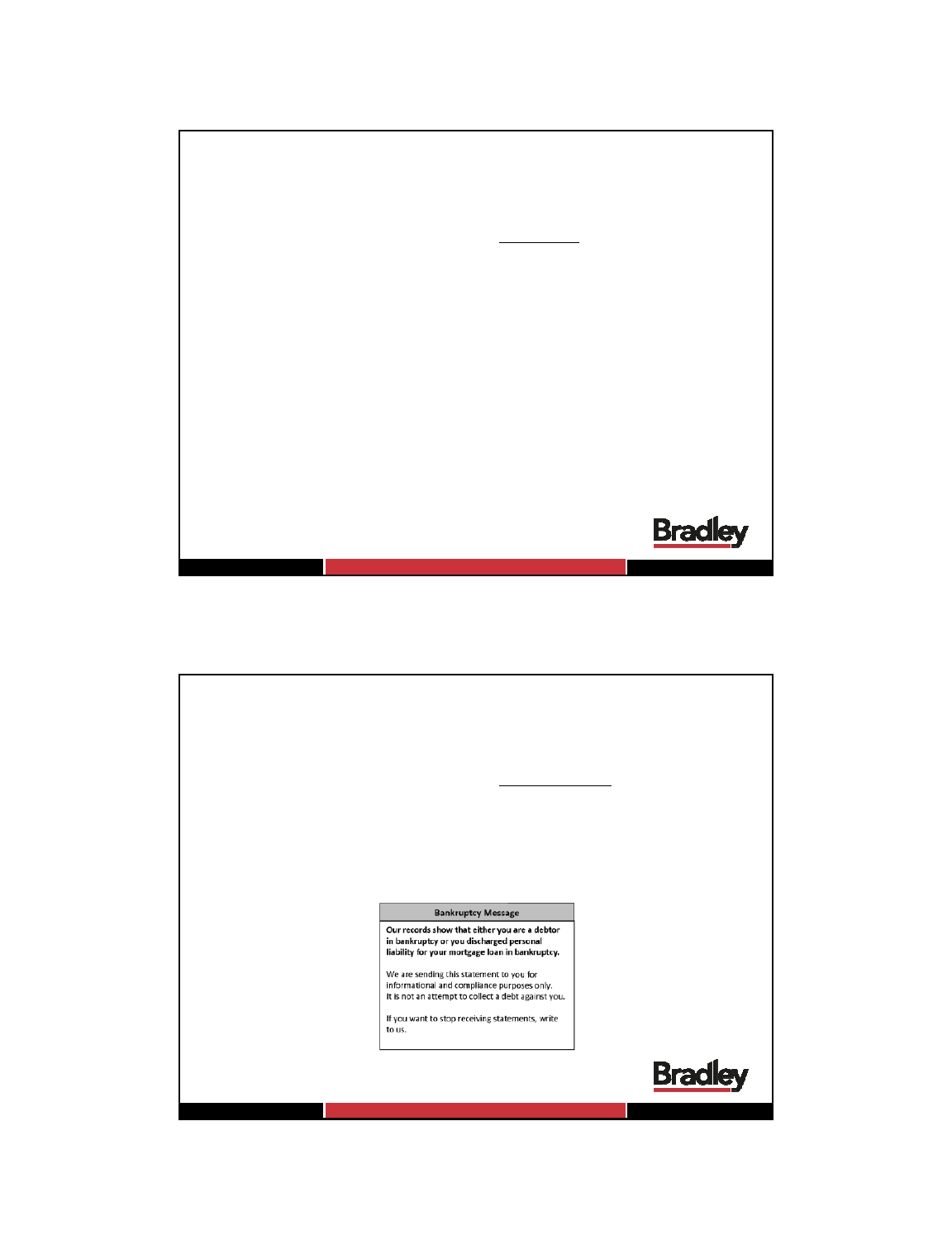
9/27/2016
11
Periodic Billing Statements
Content – All Bankruptcy Types
• Statement (or coupon book) may omit:
The amount of any late payment fee, and the date on
which that fee will be imposed if payment has not been
received
The length of the consumer’s delinquency
The possible risks, such as foreclosure, and expenses,
that may be incurred if the delinquency is not cured
A notice of whether the servicer has made the first
notice or filing required by applicable law for any judicial
or non-judicial foreclosure process, if applicable
21
Periodic Billing Statements
Content – All Bankruptcy Types
• Statement (or coupon book) must include:
A statement identifying the consumer’s status as a
debtor in bankruptcy or the discharged status of the
mortgage loan
A statement that the periodic statement is for
informational purposes only
22
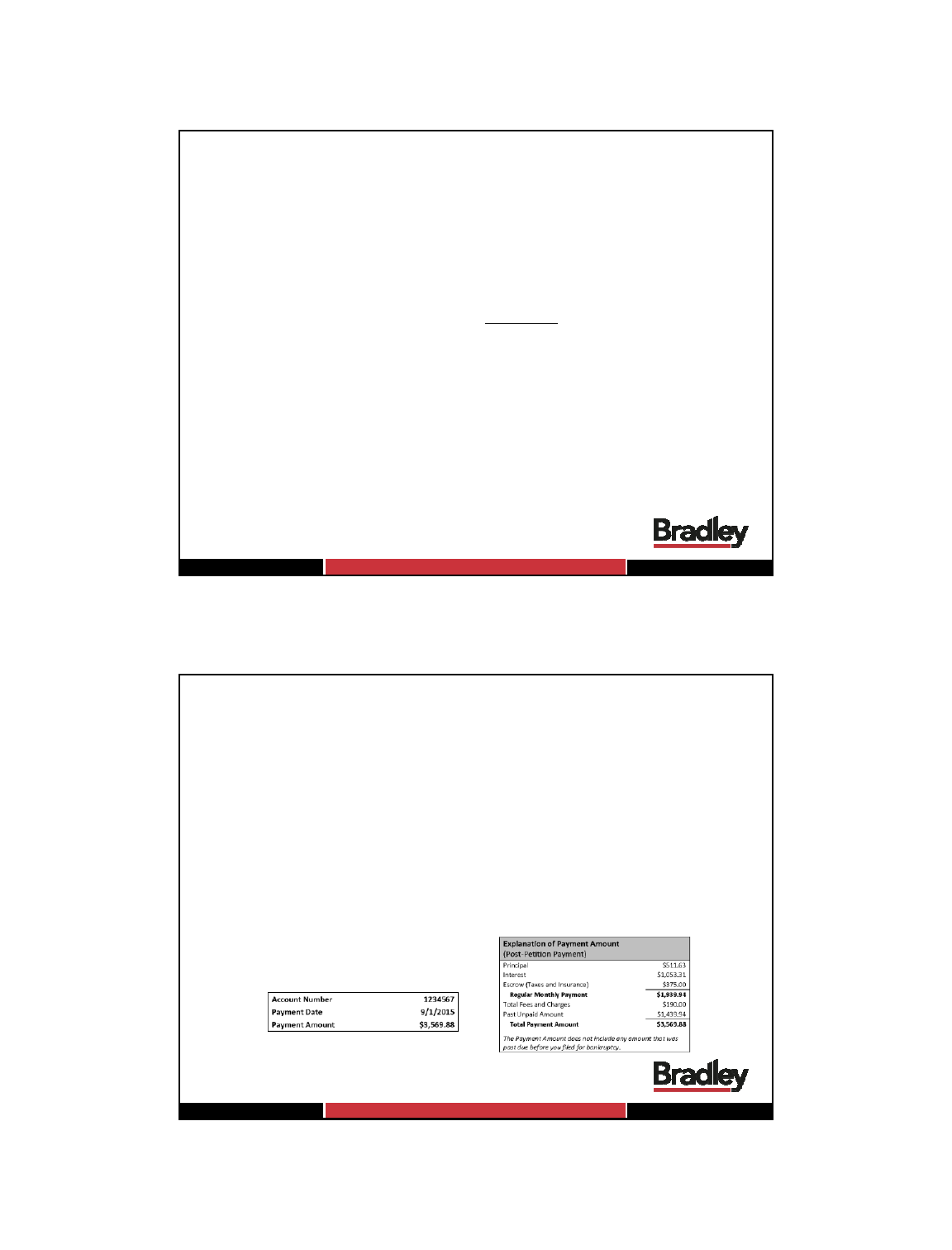
9/27/2016
12
Periodic Billing Statements
Content – Chapters 12 and 13
• With respect to a mortgage loan in which any consumer with
primary liability is a debtor in a Chapter 12 or Chapter 13
case, additional modifications apply
• Statements (or coupon books) may omit certain information
that is normally required when the consumer is more than 45
days delinquent:
Account history showing the previous six months or the period
since the last time the account was current, whichever is shorter
A notice indicating any loss mitigation program to which the
consumer has agreed, if applicable
The total payment amount needed to bring the account current
HUD counseling information
23
Periodic Billing Statements
Content – Chapters 12 and 13
• Amount Due on statement (or coupon book) may be limited to:
Date and amount of post-petition payment due; and
Any post-petition fees and charges imposed by the servicer
• Explanation of Amount Due on statement (or coupon book)
may be limited to:
Monthly post-petition payment amount, including a breakdown
showing how much, if any, will be applied to principal, interest
and escrow;
Total sum of any post-petition fees or charges imposed since the
last statement; and
Any post-petition payment
amount past due
24
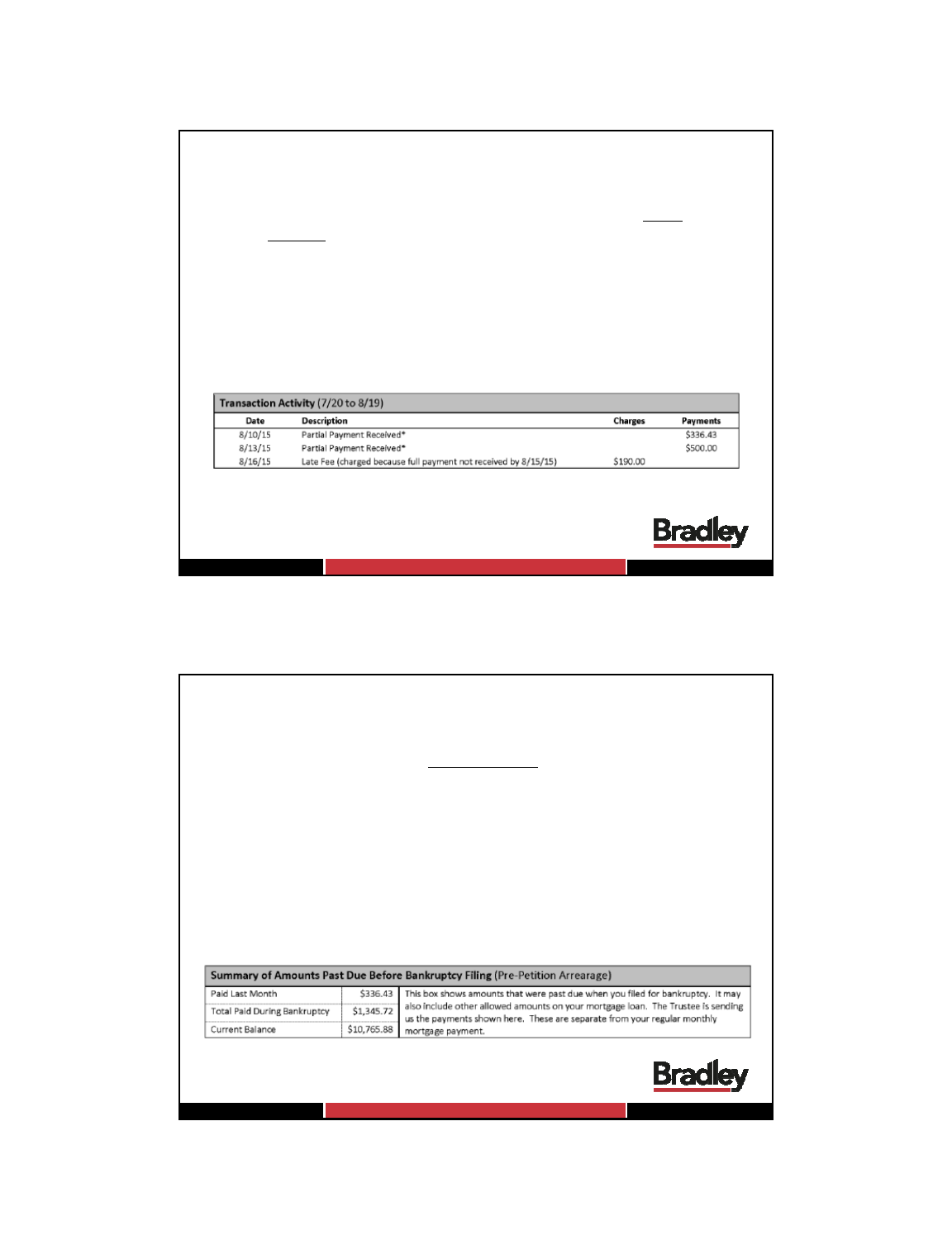
9/27/2016
13
Periodic Billing Statements
Content – Chapters 12 and 13
• Transaction Activity on statement (or coupon book) must
include:
All post-petition payments
All pre-petition payments
Payments of post-petition fees and charges
Post-petition fees and charges the servicer has imposed since
last statement
• Source of payments need not be identified
25
• If applicable, servicer must disclose information regarding
the pre-petition arrearage:
Total of all pre-petition payments received since last statement
Total of all pre-petition payments received since beginning of
the consumer’s bankruptcy case
Current balance of the consumer’s pre-petition arrearage
• These items must be grouped in close proximity to each
other and located on the first page of the statement, or,
alternatively, on a separate page enclosed with the periodic
statement or in a separate letter
26
Periodic Billing Statements
Content – Chapters 12 and 13
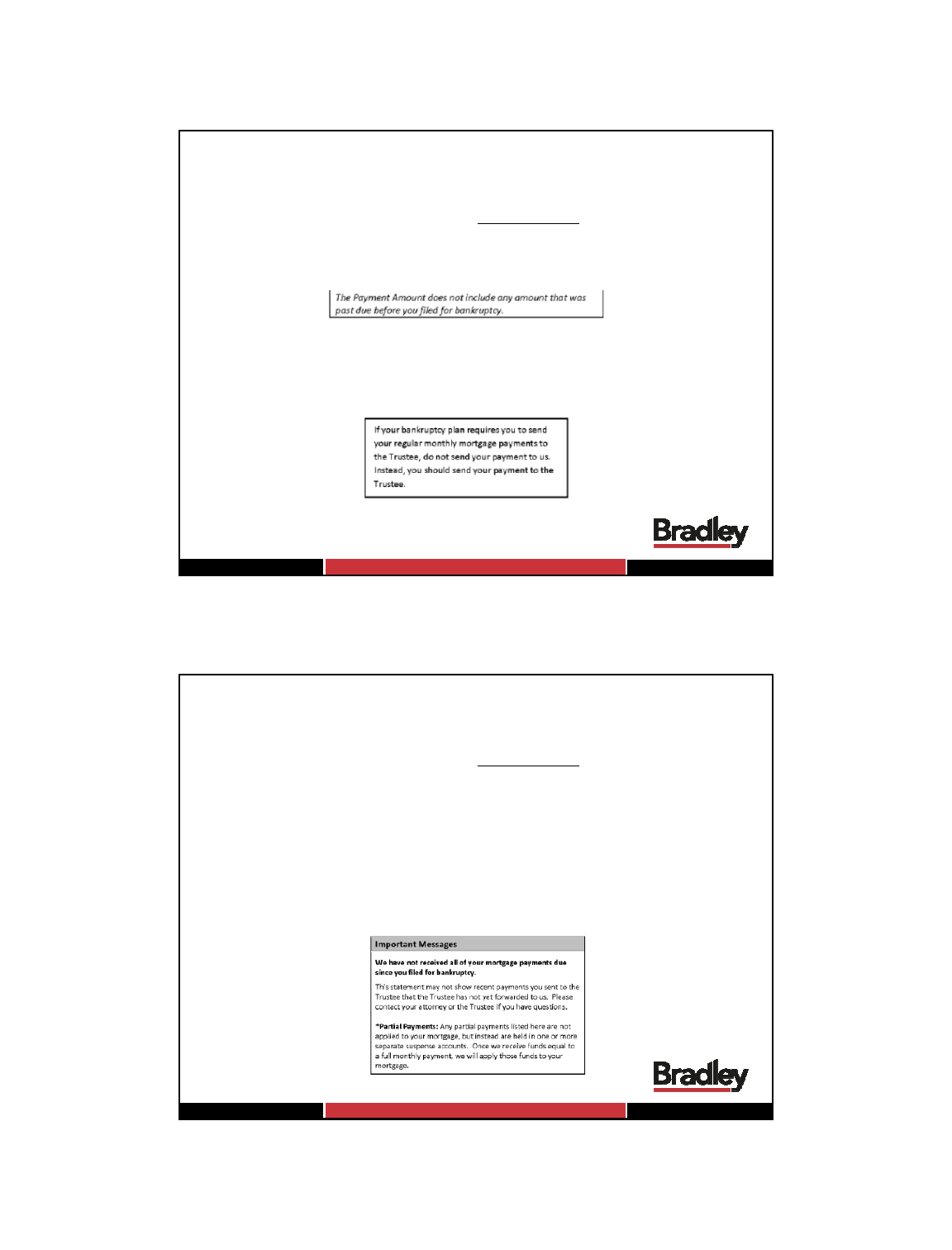
9/27/2016
14
• Statement (or coupon book) must include, as applicable:
A statement that the amount due includes only post-petition
payments and does not include other payments that may be
due under the terms of the consumer’s bankruptcy plan
If the consumer’s bankruptcy plan requires the consumer to
make the post-petition mortgage payments directly to a
bankruptcy trustee, a statement that that the consumer should
send the payment directly to the trustee and not the servicer
27
Periodic Billing Statements
Content – Chapters 12 and 13
• Statement (or coupon book) must include, as applicable:
A statement that the information disclosed on the periodic
statement may not include payments made to the trustee and
may not be consistent with the trustee’s records
A statement that encourages the consumer to contact his/her
attorney or the trustee regarding the application of payments
If the consumer is more than 45 days delinquent on post-
petition payments, a statement that the servicer has not
received all the payments that became due since the
consumer filed for bankruptcy
28
Periodic Billing Statements
Content – Chapters 12 and 13
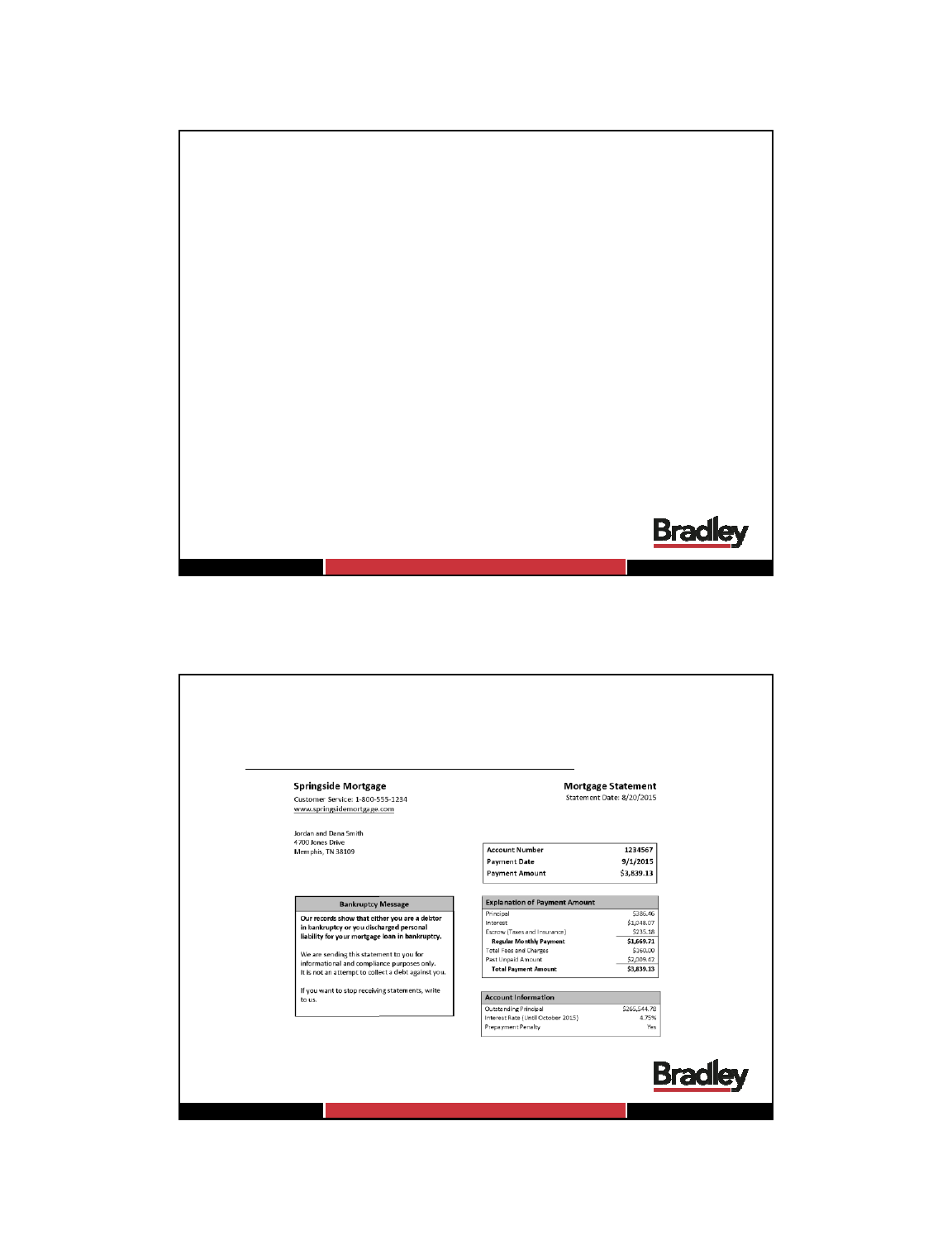
9/27/2016
15
Periodic Billing Statements
Coupon Books
• Required disclosures may be included anywhere in the
coupon book provided to the consumer, or on a separate
page enclosed with the coupon book
• Upon request, servicer must make available to the consumer
(by telephone, in writing, in person, or electronically if
consumer consents) the pre-petition arrearage information
• The same “general” bankruptcy modifications apply to
coupon books
• Delinquency/foreclosure information may be omitted
• Other accounting information
o Amount Due
o Explanation of Amount Due
o Transaction Activity
o Additional Disclosures
29
Periodic Billing Statements
Sample Forms
Chapter 7/11 Sample Periodic Statement
30
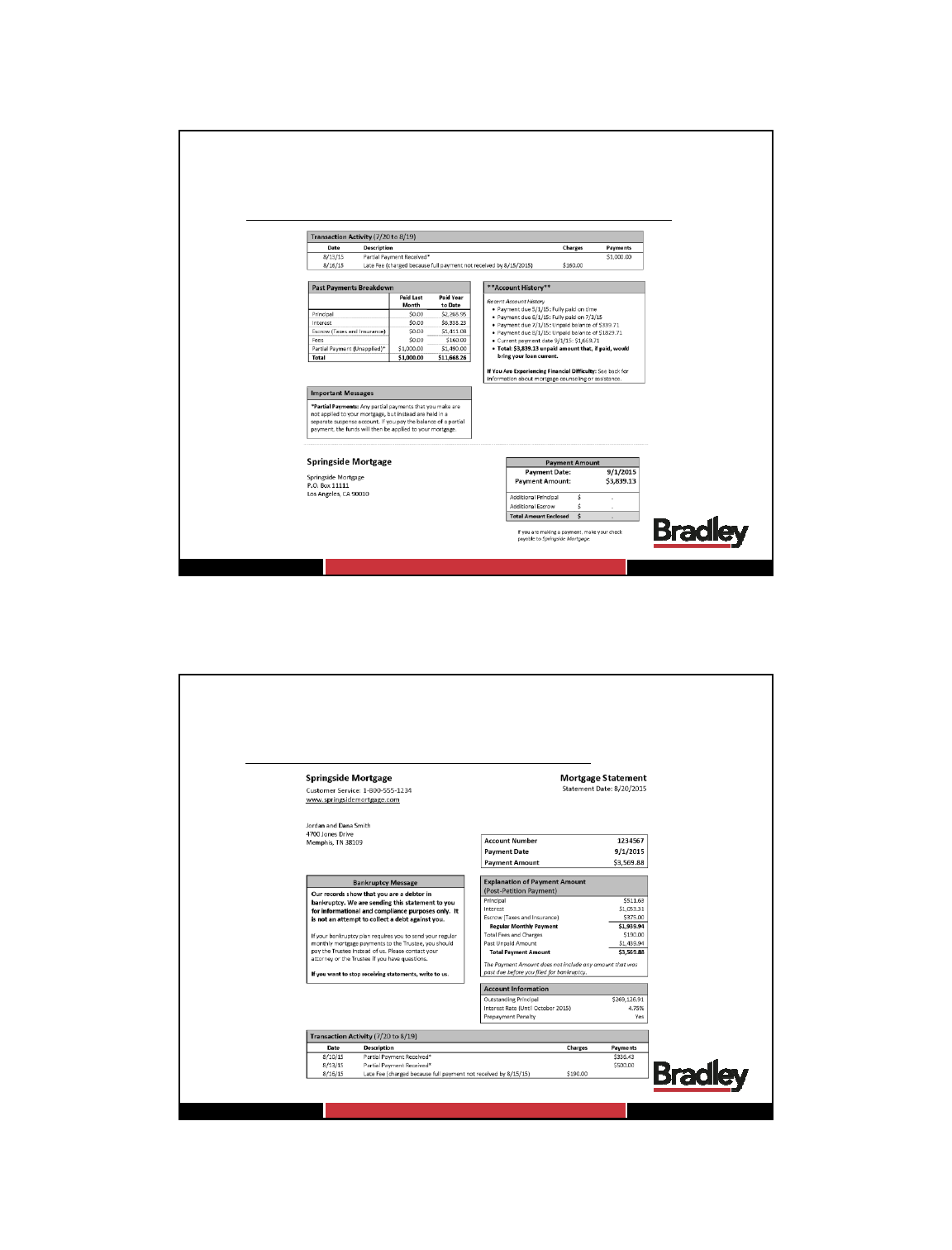
9/27/2016
16
Chapter 7/11 Sample Periodic Statement (continued)
31
Periodic Billing Statements
Sample Forms
Chapter 12/13 Sample Periodic Statement
32
Periodic Billing Statements
Sample Forms

9/27/2016
17
Chapter 12/13 Sample Periodic Statement (continued)
33
Periodic Billing Statements
Sample Forms
Key Considerations &
Takeaways
34
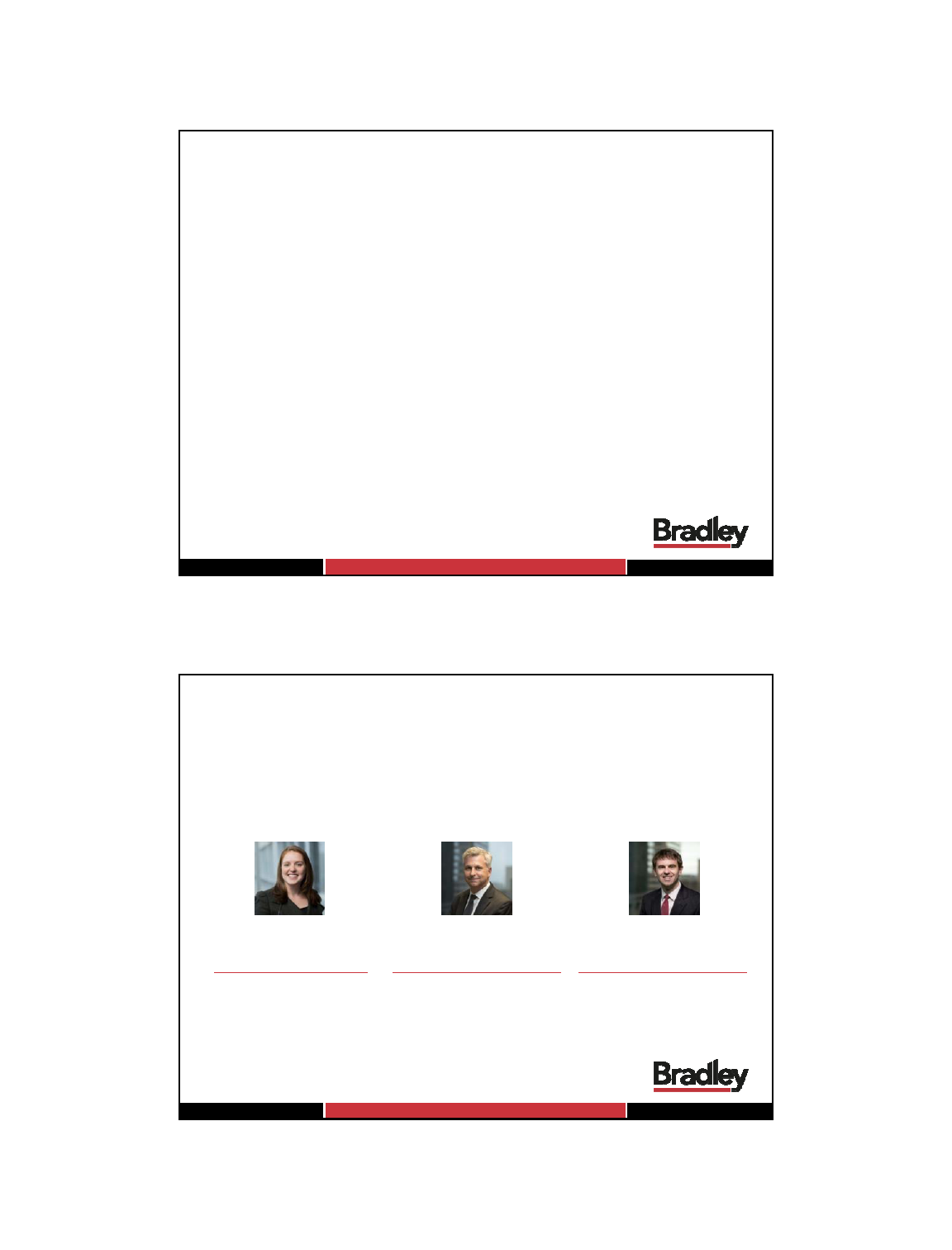
9/27/2016
18
Borrowers in Bankruptcy
Key Considerations & Takeaways
• Successfully implementing the requirements specific to
borrowers in bankruptcy will be a challenge
CFPB recognized that, with respect to billing statement
requirements:
o “[S]ervicers and third-party service providers need sufficient
time to coordinate, develop, and test systems required to
modify periodic statements for consumers in bankruptcy”
o Servicers “also need sufficient time to train employees
regarding the bankruptcy periodic statement requirements”
• Servicers should begin implementation efforts as soon as
possible
Map out applicable requirements
Conduct gap analyses
Evaluate system and technological needs
Coordinate with impacted areas of business
Monitor for additional CFPB guidance
35
Questions?
Alexandra Dugan
adugan@bradley.com
615.252.4638
Chris Hawkins
chawkins@bradley.com
205.521.8556
Jonathan Kolodziej
jkolodziej@bradley.com
205.521.8235
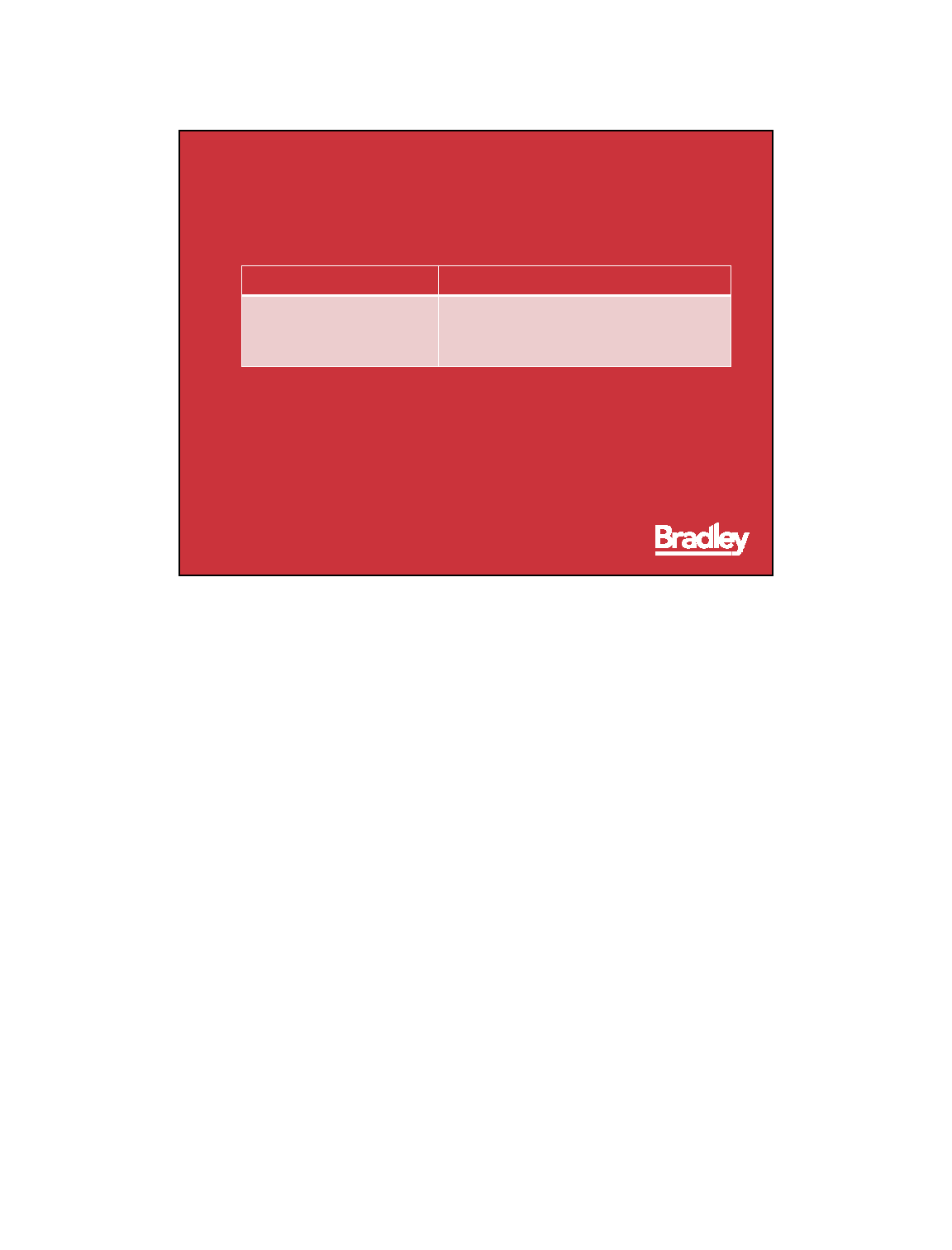
9/27/2016
19
Thank You
See below for upcoming webinars in this series.
Date Webinar
October 6, 2016
11:30 AM - 12:30 PM CST
What You Need to Know: Loss Mitigation
Jonathan Kolodziej, Jason Bushby
